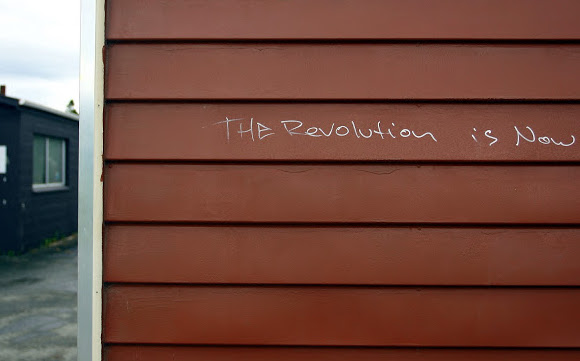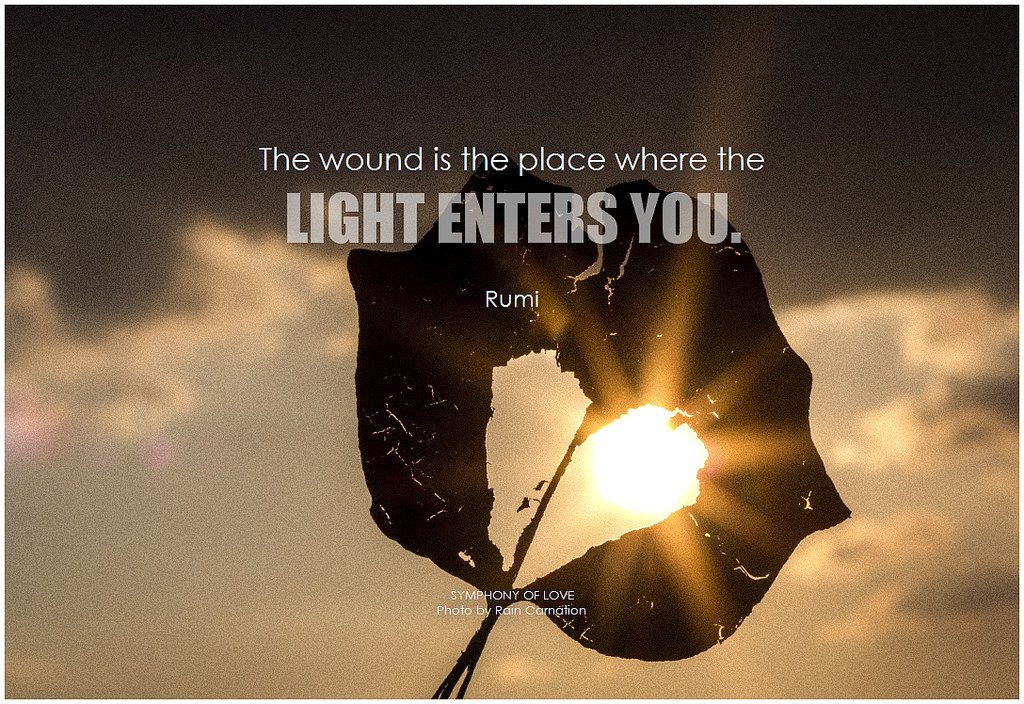 As a child, a member of my family would frequently burst into rage. He had bouts of anger so destructive and extreme, he became like a raging inferno.
As a child, a member of my family would frequently burst into rage. He had bouts of anger so destructive and extreme, he became like a raging inferno.
I learnt early on that you cannot reason with emotion.
You cannot try to reason with senseless outbursts, or violence. You cannot try to think your way out of insanity. If someone is irrational, let them be. Find a way to walk away, hide away, or stay far away.
In my experience, it wasn’t always easy to completely avoid him, but when the blaze was bursting, I could usually find a safe place hidden away from view. I developed this strategy at an early age, and in some respects and at certain times, that strategy is still in use.
There is a certain distance and sometimes disengagement with the world that keeps me safe. It’s helpful for all people on the planet right now, particularly in some areas, to shield ourselves from potential dangers. Keeping the framework and understanding that outside of the illusion that surrounds us, we can imagine, find and create our own world—so long as we don’t become numb (as that would be a pity) to our feelings.
I recently had an engagement with a woman on Facebook that interested me from an emotional perspective. I could see that her feelings were hurt, as she was desperately clinging to her ego identity, holding on so strongly to her feelings. Her pain-body was activated, and most of her consciousness was swallowed up by that pain. Being a person with strong feelings, she couldn’t sit outside those emotions—she was unable to engage with other perspectives.
When emotions hit hard, they are the most powerful forces known to human experience.
It is near-impossible to engage with emotions by rationale. Reasoning with the unreasonable is simply impractical. Throwing words at a tsunami won’t get you far.
What she was originally upset about doesn’t really matter. She felt rejected, and in that cage of suffering, her best method of defending herself was to turn it around on me and play the blame game.
When meeting another in relationship, there is a moment when their trauma or drama is engaged. Some will “fight” or go into “flight” mode, others will simply freeze. Deep within the core of our being are emotional responses developed from generations of evolution. If left unconscious, these emotions stay dormant outside our awareness, beyond our ability to witness them. Once they are triggered, it is already too late to reconfigure them.
Within a relational setting, how does one approach the emotional world—do we walk away or engage with it?
When your desires aren’t met, it can easily lead to frustration, blame and anger. The feeling of being in control—or its counterpart, being out of control—feeds the insanity that tells us we need to constantly be in control. Hence the frequent manipulation that happens in exchanging energy with people.
The cycle of blame starts with a feeling: I am feeling X.
On some level, this awareness shifts into a thought: Something or somebody has caused me to feel X. Why are my needs not being met? It must be someone else’s fault.
It is self-indulgent to believe that because we are feeling pain, it is somebody else’s fault.
Blame arises and leads to anger, but also the self-righteous notion that there is justification in blaming another person for our feelings. Self-responsibility requires a person to see absolutely that they are responsible for their own feelings.
In Falling into Grace, Adyashanti writes, “If you listen to people interact, at the very instant they get sucked into a vortex, you’ll hear them start to blame, condemn, try to control each other.”
This wheel of suffering, or samsara as the Buddha called it, is a vortex of suffering that is so compulsive and feels so real, we plant ourselves deep into its roots and get sucked into the false reality it reveals.
The only way to shift out of this egoic dreamstate is to become aware of it. When we are aware of its power, it no longer has complete control over us, just like an addict, once aware of his addiction, at least begins to have some ability to listen to another channel, or de-program the hypnosis of addiction.
The low vibration of fear and anger holds us hostage, keeps us stuck in a holding pattern of suffering with no hope of release or resolution. The more we look to someone else to satisfy our ego needs, the less power we have, and the more desperate we become. It is a pathway to emptiness and increasing unhappiness. It can never be truly fulfilled by another person, as the lack is within, inside, separate from externalities. We can never escape ourselves.
Coming back to my personal experience: how does one relate to emotions—especially when the pain-body has been triggered and we’ve entered into a field of irrationality we can’t control?
First, trying to “control” it only makes it worse, pouring fuel on the fire. So what did I do? I initially attempted to engage with the emotion, got nowhere and then retreated. When I felt the person’s behaviour had become toxic, I completely withdrew.
My concern with this woman was that her pain-body was all too easily activated, and being so easily triggered, it would make relating to her challenging. If one is too reactive, it usually falls quickly into toxicity, or in this case just too difficult to deal with. Since she has a strong sense of self-importance, when her feelings are hurt it’s a big deal in her heart and mind. She hasn’t yet developed the ability to look at people’s intentions, and develop equanimity rather than reactivity. Or to take responsibility for how she is feeling, and not project them outwards on others and blame them for her feelings. I did not see any recognition or ability on her part to have a conscience awareness of her behaviour.
I felt tremendous love for this person, even though I stepped away. I just didn’t know another way. The wounded child in her just wants to be accepted, loved and embraced. I can transmute her pain only so much by forgiveness.
The reason I share this story is not to be judgmental of her feelings. They are okay. It is the behaviour that comes with those feelings that are difficult for me to engage with. In addition, this is about my ability to discern what I want to manifest in my life, create boundaries around what is within the realm of acceptable behaviour or not, and keep my bubble of reality sacred and peaceful.
As a teacher, perhaps I failed her, or perhaps some day she will learn something from my “lesson.”
She genuinely believed that I was the cause of her suffering. How could I awaken her from believing that I was the cause of her feelings, and the thoughts she created and imagined around those feelings were not real?
Speaking of his childhood insights (epiphany!), Adyshanti also writes:
“What I realized was that adults spent a lot of time thinking, and and more important than that—and more odd, it seemed to me—they actually believed what they were thinking. They believed the thoughts in their head.”
What gives rise to suffering is a sense of self and a story created by the mind, called ego. This is the ego identity we created as infants to keep us safe. As we develop into adults, it starts to limit our growth, keeping us separate and disconnecting us from our whole connection to life. A dog can feel pain and disquiet, yet it does not hold onto its feelings perpetually—it does not reside in alienation. Animals experience life as vast happenings that they are intrinsically a part of.
“When we see ourselves as essentially separate, then we start to think that I have to take care of ‘me,’ that my needs and my wants are of utmost importance, and so we have to make sure that we get what we want, irrespective of what someone else may want or need.” ~ Adyashanti
It’s not that thoughts and feelings are meaningless, it’s just that we are the meaning-creators. We are the ones filling the void with a life that expresses who we are. If we are unable to separate from our creations and be aware of the expansive consciousness beyond that, we may become lost in our creations, lost in our feelings, and lost in our thoughts.
The way out of the vortex of suffering is to develop a dialogue with that part of you that is suffering.
Speak to the rage, speak to the suffering.
Start a conversation—it may surprise you how the relationship will develop.
_______________________________________________________
Photo Credits: Original painting supplied by the author.
What do you think – or feel? Feel free to comment down below!
You are awesome as you are, and I love you!
And if you love me back, please click ‘share’ up at the top!
David Starlyte (ND) – Australia’s Leading Soul-Coach. PERSONAL SESSIONS NOW AVAILABLE VIA SKYPE (Email me for details: davidstarlyte@gmail.com)
Find out more about me: http://davidstarlyte.com
Facebook: davidstarlyte

